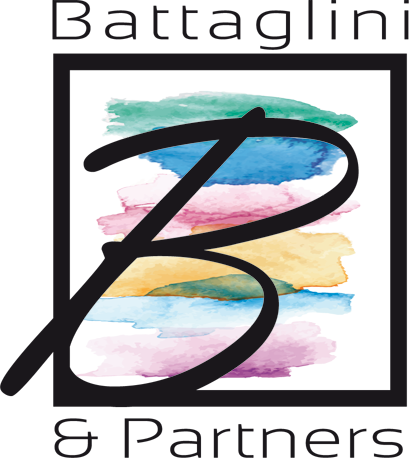What is CSS: Cascading Style Sheet Explained for Beginners
The CSS cascade is one of the most popular parts of CSS. This article will explain the CSS cascade, its importance, and the algorithm. There is a special piece of CSS that you can use to overrule all of the above calculations, even inline styles – the ! This flag is used to make an individual property and value pair the most specific rule, thereby overriding the normal rules of the cascade, including normal inline styles.
It’s important to be mindful of the source order when writing CSS, as it can affect how styles are applied to elements on the page. It’s generally a good idea to put more specific rules earlier in the CSS file so that they can be overridden by more general rules if necessary. The CSS shorthand property all can be used to apply one of these inheritance values to (almost) all properties at once. Its value can be any one of the inheritance values (inherit, initial, revert, revert-layer, or unset).
DOM representation
CSS style sheets can define the appearance and formatting of text, tables, and other elements separately from the content itself. Styles may be found within a webpage’s HTML file or in a separate document referenced by multiple webpages. At some point, you will be working on a project and you will find that the CSS you thought should be applied to an element is not working. Often, the problem is that you create two rules that apply different values of the same property to the same element. Cascade and the closely-related concept of specificity are mechanisms that control which rule applies when there is such a conflict. The rule that’s styling your element may not be the one you expect, so you need to understand how these mechanisms work.
Let’s start by taking a quick look at the key things we are dealing with, then we’ll look at each in turn and see how they interact with each other and your CSS. These can seem like a tricky set of concepts to understand. As you get more practice writing CSS, the way it works will become more obvious to you. While working through this lesson may seem less relevant immediately and a little more academic than some other parts of the course, an understanding of these concepts will save you from a lot of pain later on!
CSS Margin
It’s a convenient way to undo changes made to styles so that you can get back to a known starting point before beginning new changes. There are two types of stylesheets, you can either embed CSS within the HTML or you can link to an external stylesheet. With the priority and the cascade of the CSS in this case embedded styles and external stylesheets have the same priority. Therefore it falls back on the ordering of the styles, for example if the embedded styles come after the external stylesheet then the embedded styles would take priority. This also applies if you have more than one stylesheet linked in the head of your HTML document. The second stylesheet (or the last stylesheet in the head) has the final say over which styles are applied.
Scoping proximity is the mechanism that resolves conflicts between scoped elements. Scoping proximity states that when two scopes have conflicting styles, the style with the smallest number of hops up the DOM tree hierarchy to the scope root wins. See How @scope conflicts are resolved for more details and an example. Sets the property value applied to a selected element to the initial value of that property. CSS stands for Cascading Style Sheets, and that first word cascading is incredibly important to understand — the way that the cascade behaves is key to understanding CSS.
CSS Input
We encourage you to work through this section carefully and check that you understand the concepts before moving on. Learn CSS through 12 projects with the Tiny CSS Projects book written by Michael Gearon and Martine Dowden and published by Manning Publications. From the basics to CSS grids and animations the book makes CSS fun to learn. Flexbox is a layout model that simplifies the design of complex layouts.
Stylesheets cascade — at a very simple level, this means that the origin, the cascade layer, and the order of CSS rules matter. When two rules from the same cascade layer apply and both have equal specificity, the one that is defined last in the stylesheet web development css cascading is the one that will be used. The author stylesheet is the CSS that is written by the website creator and is declared by the HTML document. These style sheets set the styles for the web page and the author of the page defines the styles.
CSS syntax
Additionally, you won’t be able to use the same CSS style on multiple pages as it’s contained within a single page. Having everything on one page makes it easier to share the template for a preview. You will find that you quickly learn some values, whereas others you will need to look up. The individual property pages on MDN give you a quick way to look up properties and their values when you forget or when you want to know what else you can use as a value. As we have mentioned before, CSS is a language for specifying how documents are presented to users — how they are styled, laid out, etc.
Understanding origin precedence is key to understanding the cascade. The CSS cascade is an essential component of web development because it enables programmers to design complex and flexible style sheets that can be used in various situations. It is also important in the process of debugging and resolving CSS problems. Knowing the Cascade will enable you to determine which rules are being applied and why.
If you’re using CSS reset or any other CSS frameworks the recommendation is these all come before your author stylesheets. Many experienced developers would much rather refer to MDN documentation or other tutorials. Nevertheless, it is worth knowing that these specs exist and understanding the relationship between the CSS you are using, the browser support (see below), and the specs. If you didn’t fully understand the cascade, specificity, and inheritance, then don’t worry! This is definitely the most complicated thing we’ve covered so far in the course and is something that even professional web developers sometimes find tricky.
- After a CSS feature has been specified, then it is only useful for us in developing web pages if one or more browsers have implemented the feature.
- The CSS shorthand property all can be used to apply one of these inheritance values to (almost) all properties at once.
- CSS styles declared outside of any layer are combined together, in the order in which those styles are declared, into an unnamed layer, as if it were the last declared layer.
- Some elements are parents of child nodes, and child nodes have siblings.
In that module, you will also find a link to Specifications that defines the technology (also see the section below). CSS is a rule-based language — you define the rules by specifying groups of styles that should be applied to particular elements or groups of elements on your web page. CSS can be used for very basic document text styling — for example, for changing the color and size of headings and links. It can be used to create a layout — for example, turning a single column of text into a layout with a main content area and a sidebar for related information.
External and embedded stylesheets
We’ve not covered selectors in detail yet, but you can find details of each selector on the MDN selectors reference. Sets the property value applied to a selected element to be the same as that of its parent element. The cascade takes a unordered list of declared values for a given property on a given element, sorts them by their declaration’s precedence, and outputs a single cascaded value. This method is arguably the best, as you can use one stylesheet to style multiple documents, and would only need to update the CSS in one place if changes were needed.

